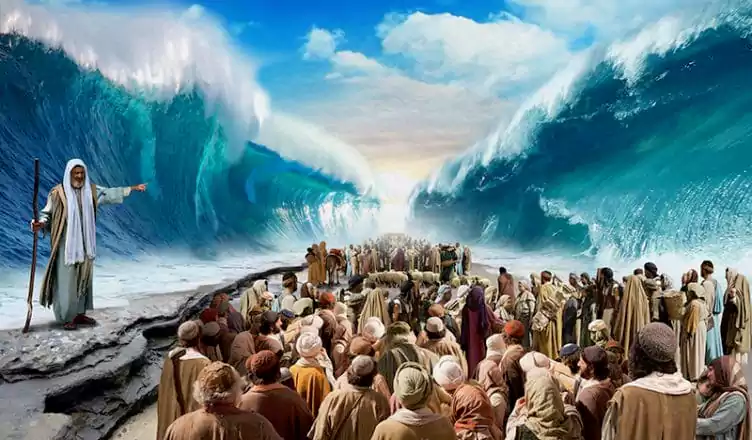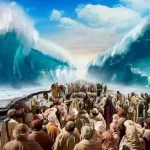Christian leader as a Shepherd
The title of a leader is one which is much desired in the world and leadership is a much sought after skill. In the world today there several analogies which are used to convey the idea of leadership like commander, captain, cheerleader, conductor, and so on. However, in the Bible we see one metaphor which is consistent and not surprisingly is not in vogue in the world around us. And the key word is ‘shepherd’.
The ‘Shepherd’ as a Biblical model
If we explore God’s Word, we will find that the idea of the shepherd as leader is something which is clear. We see that clearly in Jeremiah 3:15 which says, “And I will give you shepherds after my own heart, who will feed you with knowledge and understanding.” Again Ezekiel 34 clearly posits Israel’s leaders as shepherds. Two prototypical shepherd rulers in Biblical literature are Moses and David. Interestingly they both spent time as shepherds before they were called to lead God’s people.
A shepherd is an apt metaphor for human leadership as both the tasks involve a variety of tasks which need to be worked at. Shepherds had to combine broad competencies in animal husbandry with capacities for scouting, defiance and negotiation. The use of the shepherd metaphor for leaders affirms the coherence and inner logic of these diverse tasks and competencies. ‘Performance’ is judged by the expectations associated with that role set. A good shepherd is one who does what is required by each circumstance, in each context.
Even if we consider Jeremiah 3:15, God’s promise of the shepherd speaks of them being after God’s own heart as well as being able to lead to with knowledge and understanding, once again reiterating the versatility need of a shepherd. What this also implies is that the shepherd is not the owner but rather God is the one who is the owner of the sheep. This is an important implication that we need to keep in mind as understand the shepherd is used as one of the synonyms for elder/pastor. So, as we consider shepherding, it is meant in the context of a pastor but at same time we need to keep in mind the universal priesthood of believers.
God as Israel’s Shepherd in the wilderness
We see that God Himself was Israel’s shepherd in the wilderness with His presence through the pillar of cloud and the pillar of fire. God’s shepherding through His presence is evident in three further ways.
1.Protection: God’s presence with His people meant that the people had Protection. We see throughout God’s dramatic protection and deliverance of His people. From bringing them out of Egypt, to vanquishing Pharoah’s Army in the Red Sea, to the first battle with the Amalekites. It enabled Joshua & Caleb to boldly proclaim even in the face of scepticism from the other 10 spies.
2.Provision: God’s shepherding of His people is seen in His Provision. God consistently provided for the people of Israel – manna, meat, water, everything the people needed including rest. However, the most significant provision or food that the Lord gave His people in the wilderness was the Law. As Jesus could later say that man does not live on bread alone but on every word that comes from the mouth of the Lord; based on what is taught in Deuteronomy.
3. Guidance : The third element of God’s shepherding which is evident is the Guidance that His presence meant. The Lord ahead of the people as the pillar acted as physical guidance. God’s guidance of his people extends beyond geographical direction. The leadership of YHWH was expressed through his regular consultations with Moses, especially at the ‘Tent of Meeting’. Most importantly, the foundational form of guidance in the Pentateuch is the Torah given on Mount Sinai. This law was to become the basis for God’s perpetual guidance, celebrated so often in the Psalms. Guidance in battle and guidance by law were common. But the image of God leading his ‘flock’ purposefully in a historic journey across a desert towards a permanent pastureland reveals much more of what it means to be a shepherd. As we look at passage after passage it almost seems as if we see God with a travel ‘itinerary’, the Shepherd who leads Israel on prescribed paths towards a promised destination. But even that destination is not permanent, as we will see later in the Old Testament. Spiritual leaders in the New Testament are later called to shepherd God’s flock in a world that is not their ultimate home.
So, we see God shepherded the people through His presence. His presence meant Protection, Provision and Guidance. In the book ‘Building a Healthy Church’, Mark Dever and his co-author use the three activities of a pastor as to Graze, Guard and Guide which is what we see God doing for His people in the wilderness.
Moses as a Shepherd of God’s people
Moving further onto the example of Moses, we see that there are two elements to his leadership of the people of Israel.
Firstly, we see that he was a Prophet for God. Central to his many roles was the Word of God, and as a prophet he was God’s spokesman to the community an extension of God’s guiding, nurturing presence for Israel. Moses was the means by which God led and fed his people in the wilderness.
Secondly, we see that he was a priest for Israel. The other important dimension of Moses’ leadership is his role as mediator/intercessor, which is often understood in priestly terms. The pilgrimage of Moses as a leader moves from an impulsive attempt to mediate for ‘his’ people,
to a state of disbelief that he could ever help them, to a sequence of intercessory experiences through which he becomes more fully identified with them. This journey, it becomes clear, is integral to God’s plan for him as their shepherd leader.
The central character is the Promise-Maker and Promise-Keeper is God. Moses shared God’s glory, it is true (literally, Exod. 34:29); but he had none of his own. His role was absolutely pivotal in the drama, but he was a supporting actor. A simple summary of Moses’ leadership in the wilderness is given in Psalm 77:20 [H 21]: ‘You led your people like a flock by the hand of Moses and Aaron.’ In this retrospection, it was God who led his people by the hand of his servants. So, we see Moses was God’s shepherd who acted as a Prophet and Priest.
Conclusion
We see shepherding further illustrated through the Bible, which as we see is the critical task of leading God’s people. Let us for now look to imbibe the elements of Bible that we see from the first few books of the Bible
I have developed this based on Timothy S. Laniak’s book – “Shepherds after my own heart” from the New Studies in Biblical Theology (NSBT) series published by IVP, edited by DA Carson







